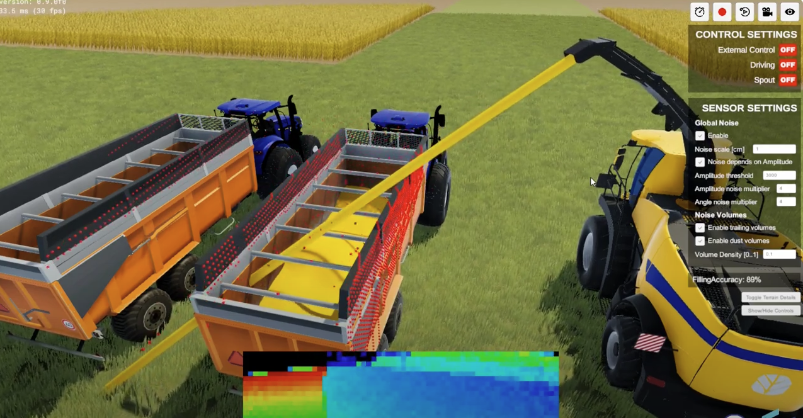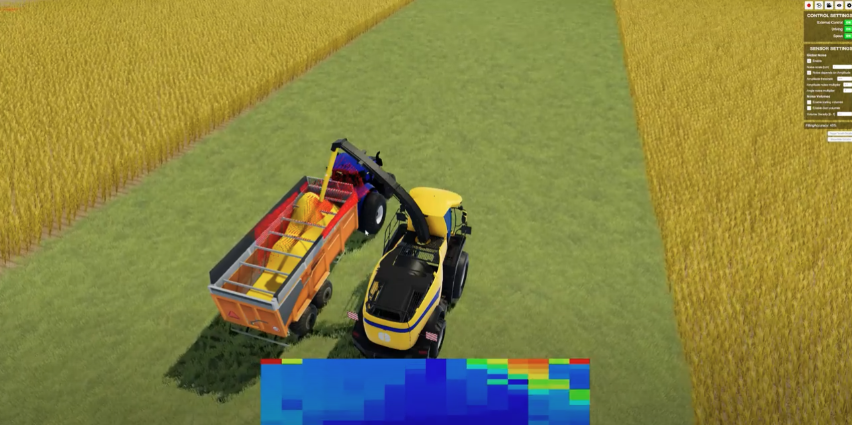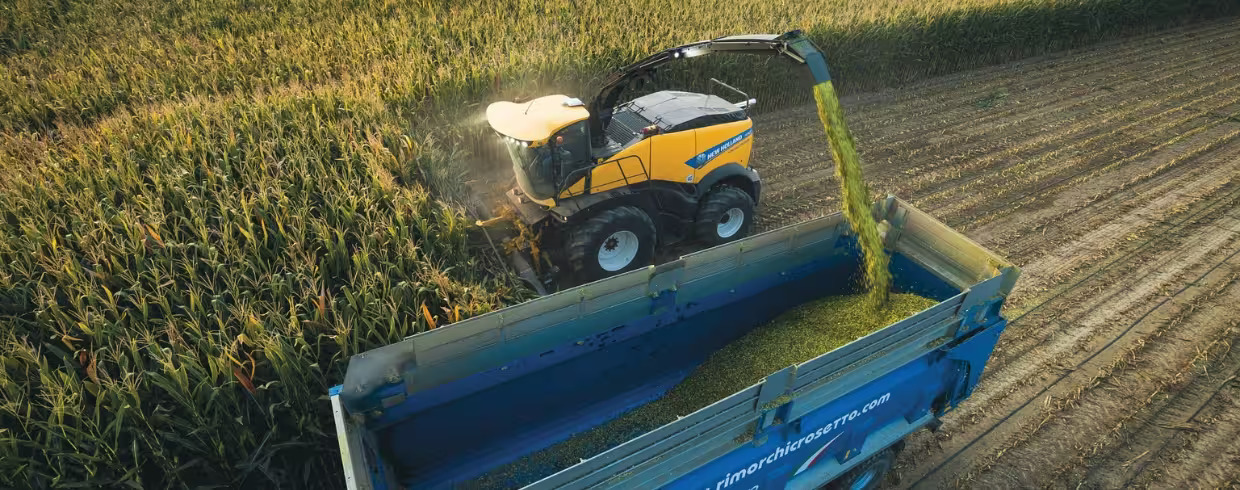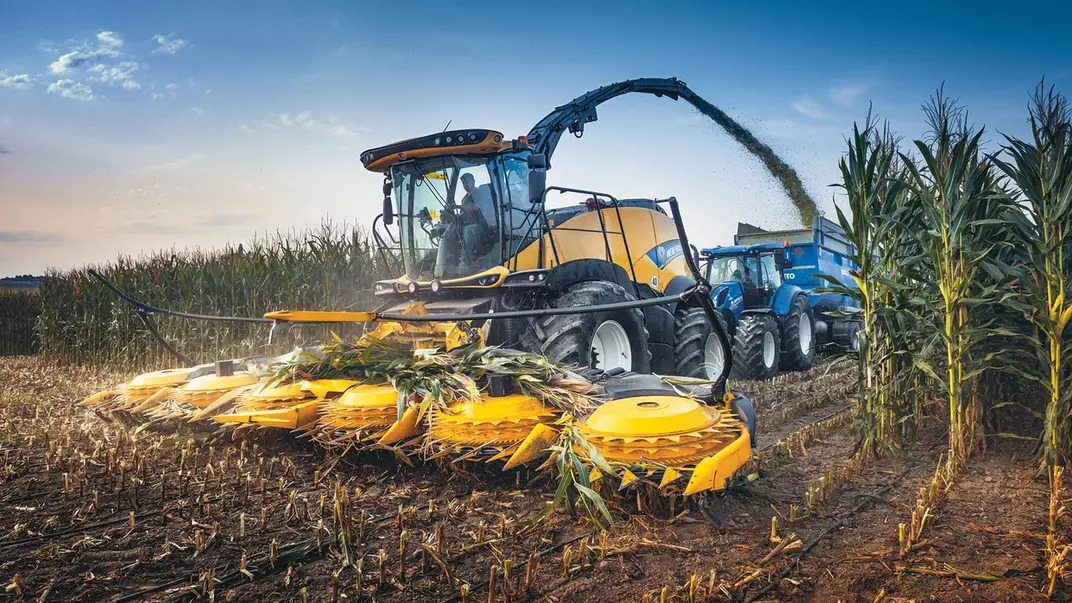simulation & virtual commissioning
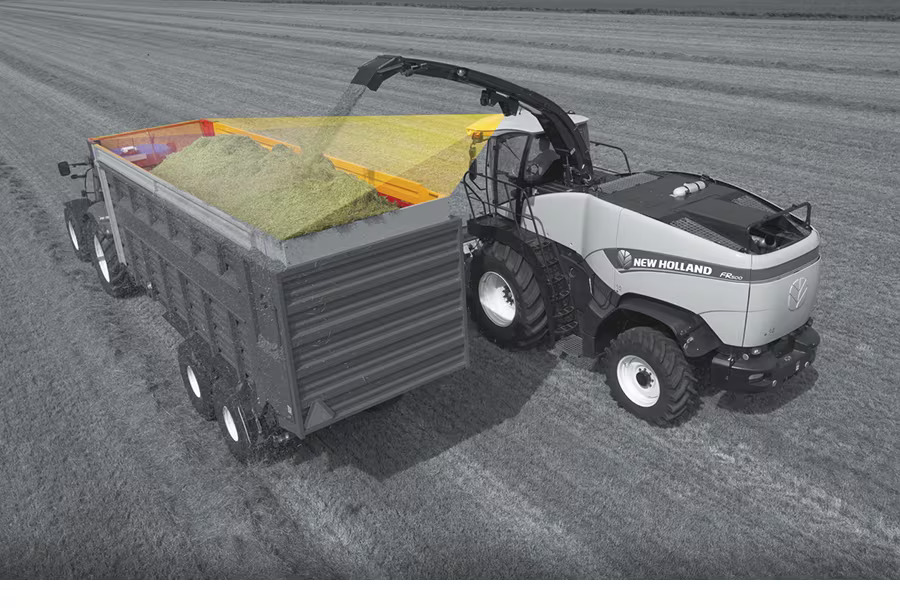
About
Company
CNHLocation
Zedelgem, BelgiumCompetences
computer vision
digital twin
virtual commissioning
model based design
agricultural equipment & machinery
automating a human task of a forage harvester driver
relevance
New Holland’s massive FR9000 series forage harvesters are capable of harvesting corn, grass, and other crops at throughputs of more than 300 tons per hour while cutting the crop in pieces as short as 4mm. In addition to steering and maintaining an optimal speed, harvester operators must direct the crop flow into a trailer and monitor its fill level. The need to focus on driving and filling tasks simultaneously makes a complex job even more difficult.
The New Holland IntelliFill™ system enables operators to drive the harvester while filling a trailer accurately— even when visibility is limited.
"Digital twin simulation enabled us to debug and optimize our algorithms faster and generated an embedded code that worked the first time."

Michael Carpentier
Global Product Lead - CNH
challenge
Filling system prototypes based on standard video cameras proved ineffective because they could not accurately measure distances, detect different trailer shapes and sizes, or handle environmental conditions such as dust, bright sunlight, and darkness.
Although 3D near-infrared cameras improved distance measurements, the need to test and debug under real-world conditions required much of the development work to be done on the harvester. As a result, the ability to rapidly make changes and then retest the design with the actual hardware was critical.
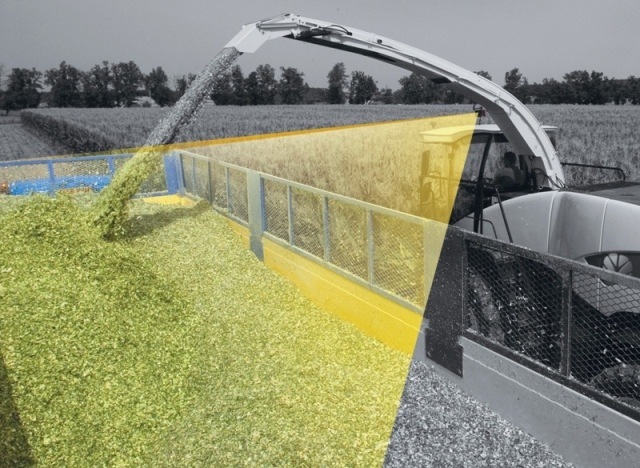
solution
The team used model-based design and digital twins to accelerate the development and implementation of the New Holland IntelliFill™ system.
1 computer vision & model based design
- The team collected data from the 3D camera mounted on a harvester spout. They analyzed these point clouds and evaluated 3D processing techniques.
- Candidate algorithms were implemented as components of a simulation controller model. The controller receives 3D data from the camera and produces signals to control the lateral movement of the spout, the direction of flow leaving the spout, and the angle of the camera, as well as visual and audible alerts to the driver.
- The team defined controller states, which manage the system’s architecture and direct the control flow from input data to output signals.
2 virtual simulation
- After developing a basic plant model, the team conducted closed-loop simulations of the trailer filling process.
- The team fine-tuned the simulation model in the field to improve and optimize the control algorithm.
- Simulation made it possible to simulate 'worse-than-real' cases and thus make the detection algorithm extremely robust.
result
1 development time halved
- Even with a team of experienced programmers it would not have been possible to complete the project on time without model-based design. With simulation and digital twins we could prototype and test the software before use.
2 generated code immediately operational
- The model we generated from the virtual simulation in our digital twin was operational from the first try. It performed exactly during field testing as we had expected.
3 fast iterations
- Fast iterations of the algorithm model were possible because new concepts or codes could be virtually simulated in any kind of circumstance.
- Using the simulation model, many typical scenarios could be quickly evaluated, covering a wide variety of trailer sizes and colors, crop types, weather and environmental conditions and sensor disturbances.
- The team spent less time doing bug fixing.
4 industry innovation award won
- The New Holland IntelliFill™ system won a gold medal for technical innovation from Agritechnica, Europe’s largest agricultural fair. This award recognizes products with new functions that significantly improve existing processes.
